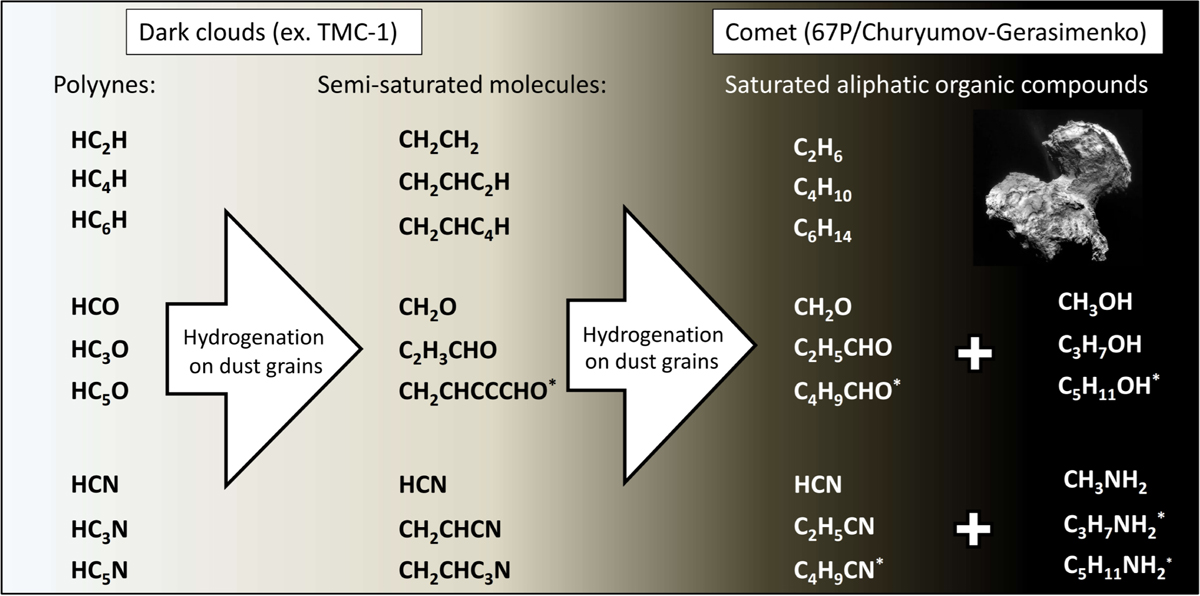Fig. 8

Download original image
Schematic representation of the overall suggested mechanism. Various polyynes observed in dark clouds (e.g., TMC-1) are presented in the left part of the reaction scheme. The accretion of polyynes on the surface of the grains is followed by hydrogenation of their unsaturated CC triple bonds, resulting in the formation of their semi-saturated and fully saturated counterparts. Besides CH2 CHCCCHO, all of the first- generation products obtained by such hydrogenation have also been observed in the gas phase in TMC-1 or other dark clouds (Brown 1981; Irvine & Hjalmarson 1984; Agúndez et al. 2021; Cernicharo et al. 2001, 2020, 2021a,b, 2024; Lee et al. 2021; McGuire et al. 2017). In the right part of the reaction scheme, we present the fully saturated aliphatic organic compounds. Most of these molecules have been observed in the comet 67P/Churyumov-Gerasimenko. The heavy molecules whose identifications are still lacking are marked with asterisks. It should be noted that UV- photolysis and cosmic ray processing of fully saturated aliphatic compounds result in their efficient dehydrogenation. The high saturation degree of the detected aliphatic compounds hints at their partial formation through surface hydrogenation mechanisms (Altwegg et al. 2017; Schuhmann et al. 2019; Hänni et al. 2021, 2022, 2023). The image of comet 67P/Churyumov-Gerasimenko is taken by ESA Rosetta on September 2, 20143.
Current usage metrics show cumulative count of Article Views (full-text article views including HTML views, PDF and ePub downloads, according to the available data) and Abstracts Views on Vision4Press platform.
Data correspond to usage on the plateform after 2015. The current usage metrics is available 48-96 hours after online publication and is updated daily on week days.
Initial download of the metrics may take a while.


